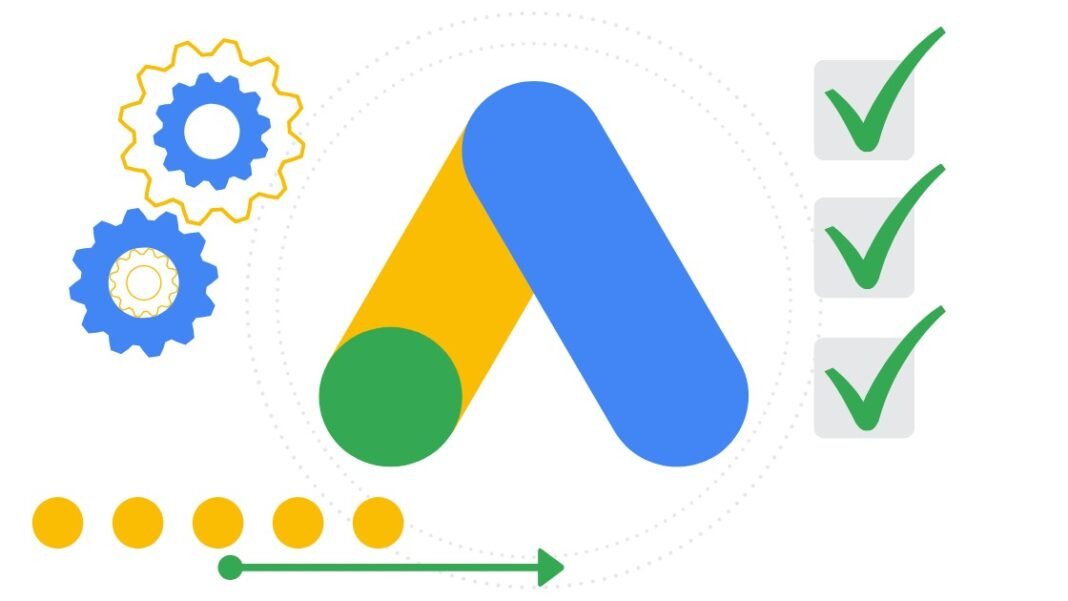Welcome to the world of WordPress, where creating and managing a website has never been easier. However, with millions of websites competing for attention, it’s crucial to optimize your WordPress site for search engines to ensure maximum visibility and organic traffic. In this article, we’ll explore proven strategies to improve your WordPress site’s SEO and boost your online presence.
Understanding SEO for WordPress
Before diving into the optimization techniques, let’s briefly understand what SEO is and why it’s essential for WordPress sites. SEO, or Search Engine Optimization, refers to the process of optimizing your website to rank higher in search engine results pages (SERPs) for relevant keywords. It involves various strategies and tactics to improve your site’s visibility, increase organic traffic, and attract potential customers.
WordPress, combined with professional WordPress development services, being a popular content management system (CMS), offers several advantages for SEO. Its user-friendly interface, customizable themes, and extensive plugin ecosystem make it a preferred choice for businesses and individuals looking to establish an online presence. However, to leverage the full potential of WordPress and ensure optimal SEO performance, it’s crucial to implement effective SEO practices.
Table of Contents
Optimizing WordPress Site Structure
The structure of your WordPress site plays a vital role in its search engine visibility. Here are some key steps to optimize your site structure:
- Choosing a SEO-friendly WordPress theme: Selecting a well-coded, responsive theme with clean code and fast loading times is crucial for SEO. Avoid themes with excessive features and bloated code that can negatively impact your site’s performance.
- Setting up permalinks and URLs: Configure your permalinks to be SEO-friendly, using keywords in the URL structure. WordPress allows you to customize your permalinks easily.
- Organizing content with categories and tags: Utilize categories and tags effectively to organize and structure your content. This not only helps search engines understand your site’s architecture but also improves user experience.
Enhancing On-Page SEO
On-page SEO focuses on optimizing individual web pages to rank higher and attract organic traffic. We have mentioned some of the most used on page SEO check list by big WordPress development company. So you can Implement the following techniques to enhance on-page SEO for your WordPress site:
- Keyword research and optimization: Conduct thorough keyword research to identify relevant keywords with high search volumes and moderate competition. Optimize your content by incorporating these keywords naturally into your page titles, headings, and body text.
- Writing compelling meta titles and descriptions: Craft persuasive meta titles and descriptions that entice users to click through to your site from the search results. Ensure they accurately reflect the content of each page and include relevant keywords.
- Optimizing headings and content structure: Structure your content with appropriate headings (H1, H2, H3, etc.) to improve readability and signal the relevance of different sections to search engines. Incorporate keywords into your headings strategically.
- Adding alt tags to images: Assign descriptive alt tags to your images to improve accessibility and provide additional context to search engines. Use keywords sparingly and make sure the alt tags accurately describe the image content.
Improving Site Speed and Performance

Website speed and performance are crucial factors that impact both user experience and search engine rankings. Follow these tips to enhance your WordPress site’s speed and performance:
- Selecting a reliable web hosting provider: Choose a reputable web hosting provider that offers reliable servers and fast response times. Avoid shared hosting plans with limited resources that can negatively affect your site’s performance.
- Optimizing images and multimedia: Compress images without compromising quality to reduce file sizes and improve loading times. Utilize lazy loading techniques to defer loading off-screen images and multimedia elements.
- Caching and minification techniques: Leverage caching plugins and enable browser caching to store static versions of your site’s pages, reducing server load and improving speed. Additionally, minify your CSS and JavaScript files to reduce their file sizes.
- Using a content delivery network (CDN): Implement a CDN to distribute your site’s static files across multiple servers worldwide, reducing latency and improving the delivery speed for users across different geographic locations.
Ensuring Mobile Responsiveness
In today’s mobile-centric world, having a mobile-friendly website is no longer an option but a necessity. Follow these steps to ensure your WordPress site is mobile responsive:
- Importance of mobile-friendly design: Google and other search engines prioritize mobile-friendly websites in their rankings. A responsive design adapts your site’s layout and content to different screen sizes, providing a seamless user experience on mobile devices.
- Choosing a responsive WordPress theme: Select a responsive theme that automatically adjusts the design and layout based on the user’s screen size. Avoid themes that require separate mobile versions or plugins.
- Testing and optimizing for mobile devices: Regularly test your site’s mobile performance using tools like Google’s Mobile-Friendly Test. Optimize your site’s loading speed, readability, and interactive elements to provide an excellent mobile experience.
Building High-Quality Backlinks
Backlinks, or inbound links from other websites, play a significant role in improving your site’s authority and search engine rankings. Implement the following strategies to build high-quality backlinks:
- Importance of backlinks for SEO: Search engines consider backlinks as “votes” of confidence for your site’s content. Focus on acquiring backlinks from authoritative and relevant websites to improve your site’s visibility.
- Guest posting and outreach strategies: Write high-quality guest posts for reputable websites in your industry, including a link back to your site. Engage in outreach activities to connect with influencers, bloggers, and webmasters who might be interested in linking to your content.
- Engaging in social media promotion: Share your content on social media platforms to attract attention and encourage sharing. Engage with your audience, respond to comments, and build relationships with influencers who can amplify your reach.
- Participating in relevant online communities: Join industry-related forums, communities, and Q&A platforms to establish yourself as an expert. Provide valuable insights and include links to your relevant content when appropriate.
Utilizing WordPress SEO Plugins
WordPress offers a variety of SEO plugins that simplify the optimization process. Consider using the following popular plugins to enhance your site’s SEO:
- Introduction to popular SEO plugins: Yoast SEO, All in One SEO Pack, and Rank Math are widely used WordPress SEO plugins. They offer features such as XML sitemap generation, on-page optimization guidance, and social media integration.
- Configuring Yoast SEO plugin: Install and configure the Yoast SEO plugin to optimize your site’s meta tags, generate XML sitemaps, and provide real-time content analysis and recommendations.
- Leveraging All in One SEO Pack: Explore the features of the All in One SEO Pack plugin, including automatic optimization of meta tags, XML sitemap generation, and integration with popular e-commerce plugins.
- Exploring other SEO plugin options: Research and experiment with other SEO plugins available in the WordPress plugin repository to find the one that best suits your specific needs and preferences.
Monitoring and Analyzing SEO Performance
Regular monitoring and analysis of your site’s SEO performance are crucial to identify areas for improvement and track the effectiveness of your optimization efforts. Follow these steps:
- Setting up Google Analytics: Install Google Analytics on your WordPress site to gather valuable data about your website traffic, user behavior, and conversions. Analyze key metrics such as organic search traffic, bounce rate, and conversion rates.
- Tracking keyword rankings: Monitor the rankings of your target keywords in search engine results. Utilize tools like Google Search Console and third-party SEO software to track your keyword positions and identify opportunities for optimization.
- Analyzing website traffic and user behavior: Dive deeper into your site’s analytics to understand user behavior, popular landing pages, and conversion funnels. Identify pages with high bounce rates or low engagement and optimize them accordingly.
Staying Up-to-Date with SEO Best Practices
SEO is a constantly evolving field, and it’s essential to stay up-to-date with the latest trends and best practices. Here’s how to ensure you’re always ahead of the curve:
- Following industry blogs and forums: Subscribe to reputable SEO blogs and forums to stay informed about the latest algorithm updates, industry trends, and optimization techniques.
- Attending SEO conferences and webinars: Attend conferences, webinars, and virtual events related to SEO and digital marketing. These events provide valuable insights, networking opportunities, and access to industry experts.
- Continuously testing and optimizing: SEO is a continuous process of testing, analyzing, and refining your strategies. Experiment with different techniques, monitor the results, and adapt your approach based on data-driven insights.
Conclusion
Improving your WordPress site’s SEO is a multifaceted process that requires attention to various aspects, from site structure and on-page optimization to mobile responsiveness and backlink building. By implementing the strategies outlined in this article, you can enhance your site’s visibility, attract organic traffic, and ultimately achieve your digital marketing goals.
FAQs
- Q: Can I optimize my existing WordPress site for SEO?
- A: Absolutely! You can implement the SEO strategies discussed in this article on your existing WordPress site to improve its search engine visibility.
- Q: Are there any specific plugins for image optimization?
- A: Yes, several plugins like Smush, Imagify, and ShortPixel can help you optimize your images for better performance and faster loading times.
- Q: How long does it take to see SEO results for my WordPress site?
- A: SEO results can vary depending on various factors, including the competitiveness of your keywords and the extent of optimization. Generally, it takes several weeks to months to see noticeable improvements in search engine rankings.
- Q: Is it necessary to hire a digital marketing company for SEO optimization?
- A: Hiring a digital marketing agency with expertise in SEO can be beneficial, especially if you lack the technical knowledge or time to optimize your site yourself. They can provide tailored solutions and ensure effective implementation of SEO best practices.
- Q: Can I perform SEO for my WordPress site without any coding knowledge?
- A: Yes, you can perform basic SEO for your WordPress site without coding knowledge by using user-friendly plugins like Yoast SEO or All in One SEO Pack. These plugins provide intuitive interfaces and guidance to optimize your site effectively.






